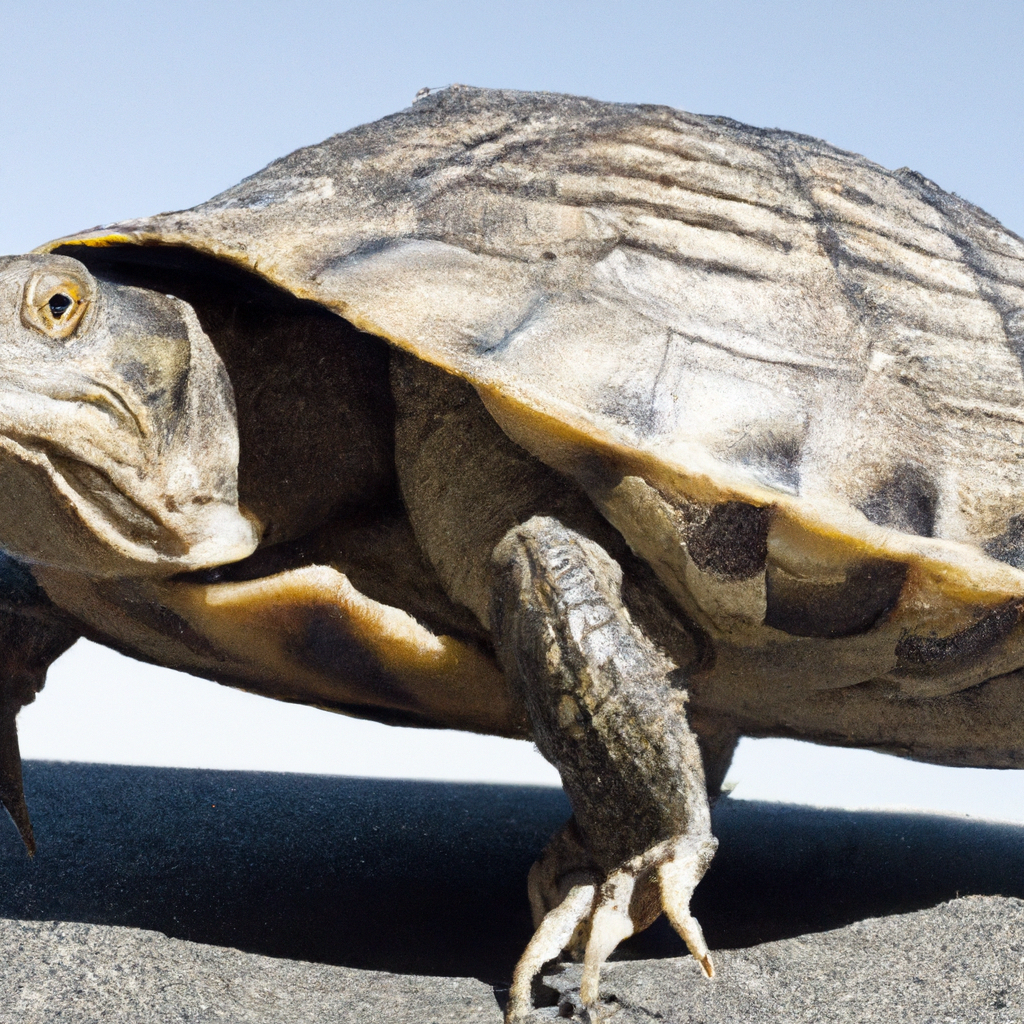Picture this: a calm and peaceful pond, reflecting the golden rays of the sun, with a group of turtles leisurely basking on a nearby log. As adorable as they may be, have you ever wondered about the secret behind a turtle’s health and fitness? It turns out that exercise plays a vital role in their overall well-being. In this article, we will explore how exercise impacts turtle health, the benefits it brings, and discover some fun and engaging ways to keep our shelled friends active and thriving. So, grab your water bottle and let’s dive into the fascinating world of turtle fitness!

Understanding Turtle Health and Fitness
Turtles, like any other living creatures, require exercise to maintain their health and overall fitness. Exercise plays a crucial role in their well-being, helping to promote physical strength, mental stimulation, and even reproductive success. As a responsible turtle owner, it is essential to understand the importance of exercise and the factors that can affect a turtle’s health and fitness.
The Importance of Exercise for Turtles
Exercise is vital for turtles to maintain a healthy weight, improve muscle tone, promote cardiovascular health, and enhance their overall physical abilities. Just like humans, turtles can suffer from obesity and related health issues if they do not engage in regular exercise. By keeping them active and providing opportunities for movement, we can help prevent the onset of diseases and keep them in optimal shape.
Factors Affecting Turtle Health and Fitness
Several factors can influence a turtle’s health and fitness levels. These include their species, age, size, natural habitat, diet, and overall lifestyle. Each turtle is unique, and it is crucial to consider these factors when designing an exercise routine. By understanding these factors, you can tailor your approach to ensure your turtle’s well-being and avoid any potential health risks.
Types of Exercises for Turtles
Land-Based Exercises
Land-based exercises are particularly beneficial for terrestrial turtles. These activities allow them to mimic their natural behavior in the wild and engage in various bodily movements. Some examples of land-based exercises include walking or roaming in a safe and enclosed area, climbing on rocks or logs, and even foraging for food. These exercises help promote muscle tone, balance, and coordination.
Water-Based Exercises
For aquatic turtles, water-based exercises are crucial for their well-being. These exercises allow them to swim freely, which is essential for maintaining strong muscles, cardiovascular health, and proper shell development. Providing a spacious tank or pond with clean water and allowing your turtle to swim and explore is an excellent way to ensure they get the exercise they need.
Natural Habitat Enrichment Activities
In addition to land-based and water-based exercises, providing natural habitat enrichment activities can further enhance your turtle’s fitness. Creating a stimulating environment with various objects, such as rocks, branches, or tunnels, encourages exploration and exercise. These activities also provide mental stimulation, as turtles naturally enjoy investigating their surroundings.

Benefits of Exercise for Turtles
Physical Health Benefits
Regular exercise offers numerous physical health benefits for turtles. It helps maintain a healthy weight, improves cardiovascular health, strengthens muscles, and promotes flexibility. Engaging in exercise also aids in digestion and overall metabolism, reducing the risk of obesity and related health issues. Additionally, exercise stimulates bone health and proper shell development, contributing to a turtle’s longevity and overall well-being.
Mental and Behavioral Benefits
Exercise is not only essential for physical health but also promotes mental and behavioral well-being in turtles. By offering opportunities for movement and exploration, exercise provides mental stimulation that prevents boredom and encourages natural behaviors. Engaging in exercise can also reduce stress and anxiety, contributing to a turtle’s overall happiness and contentment.
Enhanced Reproductive Success
Another significant benefit of exercise for turtles is improved reproductive success. Regular physical activity helps stimulate hormone production, which is crucial for successful reproduction. Exercise also promotes proper muscle tone and strength required during courtship and mating. By incorporating exercise into your turtle’s routine, you can enhance their reproductive abilities and increase the chances of successful reproduction.
Creating an Exercise Plan for Turtles
Consulting a Veterinarian
Before starting an exercise plan for your turtle, it is essential to consult with a veterinarian experienced in reptile care. They can evaluate your turtle’s overall health, assess any potential limitations, and provide guidance on suitable exercises. A veterinarian can also help you tailor an exercise plan that meets your turtle’s specific needs and capabilities.
Understanding Your Turtle’s Abilities and Needs
Every turtle is unique, with varying abilities and needs. It is crucial to understand your turtle’s species, age, and overall health to develop an exercise plan that suits them best. Some turtles may require more low-impact activities, while others may thrive with more intense exercises. Considering their habitat requirements and physical limitations ensures their safety and enjoyment during exercise.
Setting Clear Goals and Objectives
Setting clear goals and objectives is essential to track your turtle’s progress and ensure you are providing adequate exercise. Whether your objective is weight management, muscle toning, or overall fitness improvement, having a measurable goal helps keep you focused and motivated. Keep in mind that goals may vary depending on your turtle’s age and species, so consult with your veterinarian for guidance.
Choosing the Right Exercises
When selecting exercises for your turtle, consider their natural behaviors and instincts. Land-based exercises can include providing objects to climb on or creating an obstacle course for them to navigate. Water-based exercises can include swimming sessions or providing a current to mimic natural currents. Natural habitat enrichment activities can include hiding food for them to find or introducing new objects for exploration. By choosing exercises that align with their instincts, you can ensure they enjoy and benefit from their workout.
Implementing Exercise Routines for Turtles
Warm-Up and Stretching Exercises
Just like humans, turtles benefit from warm-up and stretching exercises before engaging in more intense activities. Gentle stretching movements can help prevent muscle strains and injuries. Before a cardio workout or swimming session, allow your turtle to move and stretch in a shallow, safe environment. This warm-up routine prepares their muscles and joints for exercise.
Strength and Endurance Exercises
To build strength and endurance, provide activities that challenge your turtle’s physical abilities. This can include climbing exercises for terrestrial turtles or swimming against a current for aquatic turtles. Gradually increase the intensity and duration of these exercises to build their stamina over time. It is essential to monitor their response and adjust the intensity accordingly.
Flexibility and Agility Exercises
Incorporating flexibility and agility exercises into your turtle’s routine helps improve their overall mobility and coordination. These exercises can include obstacle courses with tunnels or low hurdles for land-based turtles or creating currents or floating platforms for aquatic turtles. These activities encourage them to move in different directions and stretch their bodies, promoting flexibility and agility.
Maintaining a Consistent Routine
Consistency is key when it comes to exercise routines for turtles. Establish a regular schedule for exercise and stick to it. Consistency helps turtles to adapt and understand their exercise routines, reducing stress and anxiety. Regular exercise also ensures that they receive the necessary physical and mental stimulation to maintain their health and well-being.
Overcoming Challenges in Exercising Turtles
Motivating a Sedentary or Reluctant Turtle
Some turtles may be naturally less active or exhibit reluctance towards exercise. To motivate them, create a stimulating environment with interesting objects, such as interactive toys or food puzzles. Enticing them with their favorite foods during exercise can also provide an added incentive. Start with shorter exercise sessions and gradually increase the duration as they become more comfortable and engaged.
Dealing with Physical Limitations or Disabilities
Turtles with physical limitations or disabilities may require special consideration and modifications to their exercise routines. Consult with a veterinarian to determine suitable exercises that accommodate their limitations while still providing adequate stimulation. Adaptations can include gentle stretches, slow walks, or low-intensity swimming sessions. It is essential to prioritize their safety and well-being.
Addressing Potential Risks and Dangers
Exercise should always be conducted in a safe and controlled environment. Remove any potential hazards, such as sharp objects or toxic plants, from the exercise area. Supervise your turtle during exercise to ensure they do not encounter any danger or escape from their designated area. Taking these precautions minimizes the risk of injuries or accidents.
Monitoring and Evaluating Turtle Fitness
Tracking Exercise Frequency and Duration
Keep a record of your turtle’s exercise frequency and duration to monitor their progress and ensure they receive enough physical activity. By tracking exercise sessions, you can identify any inconsistencies or changes in their routine. This record also helps in evaluating the effectiveness of the exercises and making adjustments as needed.
Assessing Changes in Overall Health and Behavior
In addition to tracking exercise, regularly assess your turtle’s overall health and behavior. Look for signs of weight loss or gain, changes in appetite, shell condition, and energy levels. Healthy exercise should contribute to improved health and behavior, so if you notice any negative changes, consult with a veterinarian.
Scheduling Regular Veterinary Check-Ups
Regular veterinary check-ups play a crucial role in monitoring your turtle’s overall health and fitness. A veterinarian can assess any changes in their physical condition, provide guidance on their exercise plan, and address any specific concerns you may have. By scheduling regular check-ups, you can ensure that your turtle remains in the best possible health.
Precautions and Safety Measures
Ensuring Proper Habitat Conditions
Maintaining proper habitat conditions is essential for both exercise and overall turtle health. The habitat should provide adequate space for exercise and movement, with temperature, humidity, and lighting levels suitable for your specific turtle species. Regularly clean the habitat to prevent the buildup of harmful bacteria and ensure a safe environment for exercise.
Avoiding Overexertion and Exhaustion
While exercise is beneficial, it is essential to avoid overexertion and exhaustion in turtles. Start with short exercise sessions and gradually increase the duration and intensity. Pay attention to your turtle’s behavior and signs of fatigue or distress during exercise. If you notice any signs of overexertion, stop the activity and allow them to rest.
Preventing Injuries and Accidents
To prevent injuries and accidents during exercise, always supervise your turtle and ensure the exercise area is secure. Any objects or equipment used during exercise should be safe and free of sharp edges or potential hazards. Check for any potential dangers, such as small gaps or openings where your turtle could get stuck. By being vigilant and proactive, you can minimize the risk of injuries.
Common Mistakes to Avoid in Turtle Exercise
Skipping Warm-Ups and Cool-Downs
One common mistake is skipping warm-up and cool-down exercises. Warm-ups prepare the muscles and joints for exercise, while cool-downs help the body recover and prevent muscle soreness. These essential routines should not be overlooked, as they contribute to overall exercise safety and effectiveness.
Inadequate Rest and Recovery Periods
Turtles, just like humans, need adequate rest and recovery periods between exercise sessions. It is essential to provide them with sufficient time to rest and recuperate, allowing their muscles to recover and their bodies to recharge. Pushing turtles too hard without adequate rest can lead to fatigue or injuries.
Using Inappropriate Exercise Equipment
Using inappropriate or ill-fitting exercise equipment can pose a risk to turtle safety. Avoid using items that are too small or unstable, as they can lead to accidents or injuries. Invest in suitable exercise equipment designed specifically for turtles, ensuring their safety during exercise.
Conclusion
Exercise plays a crucial role in maintaining turtle health and fitness. By understanding the importance of exercise, implementing appropriate routines, and monitoring their progress, you can ensure that your turtle thrives both physically and mentally. Remember to consult with a veterinarian, tailor exercises to their abilities, and prioritize their safety throughout the process. With a well-thought-out exercise plan and consistent dedication, you can provide your turtle with the exercise they need to lead a happy and healthy life.
